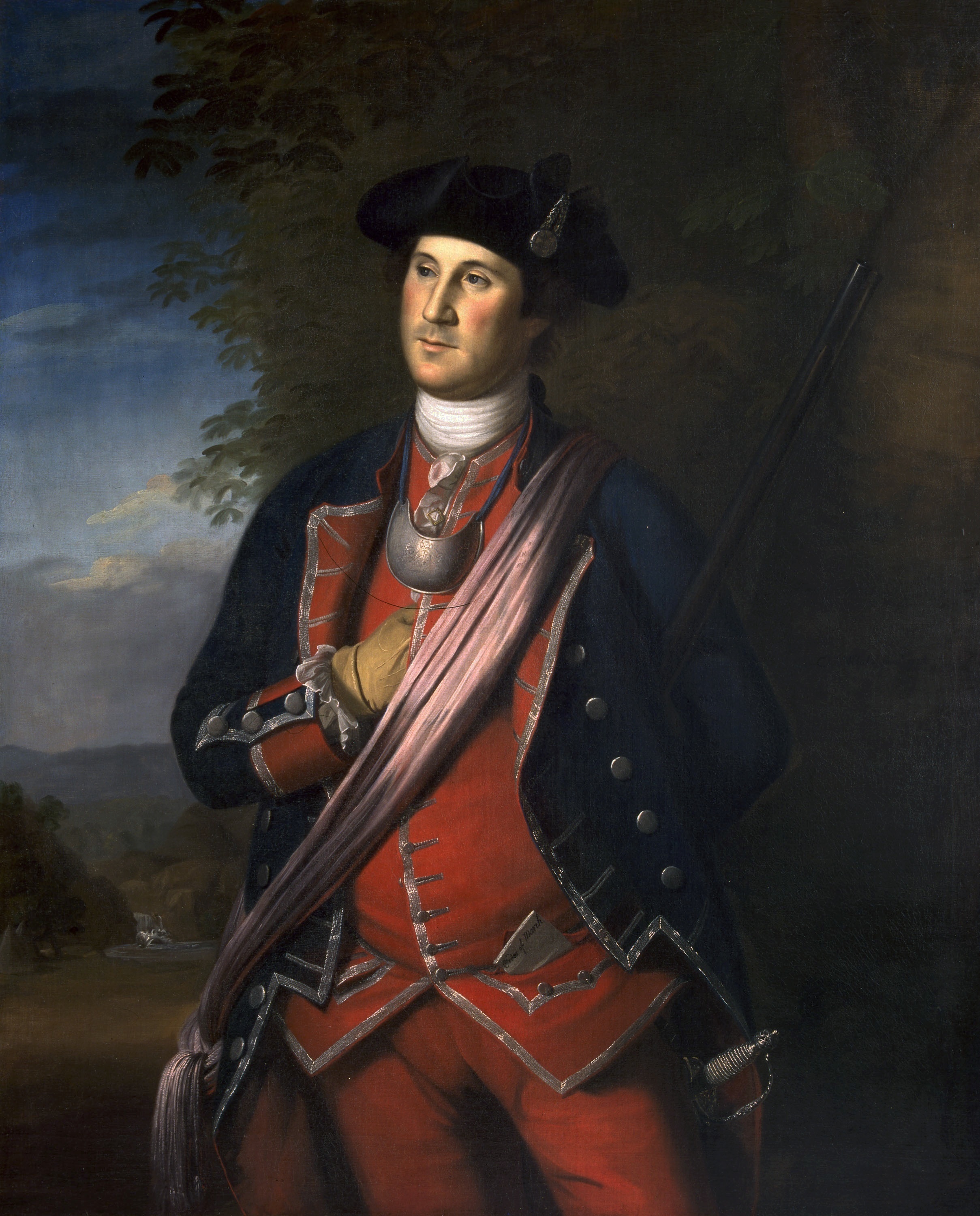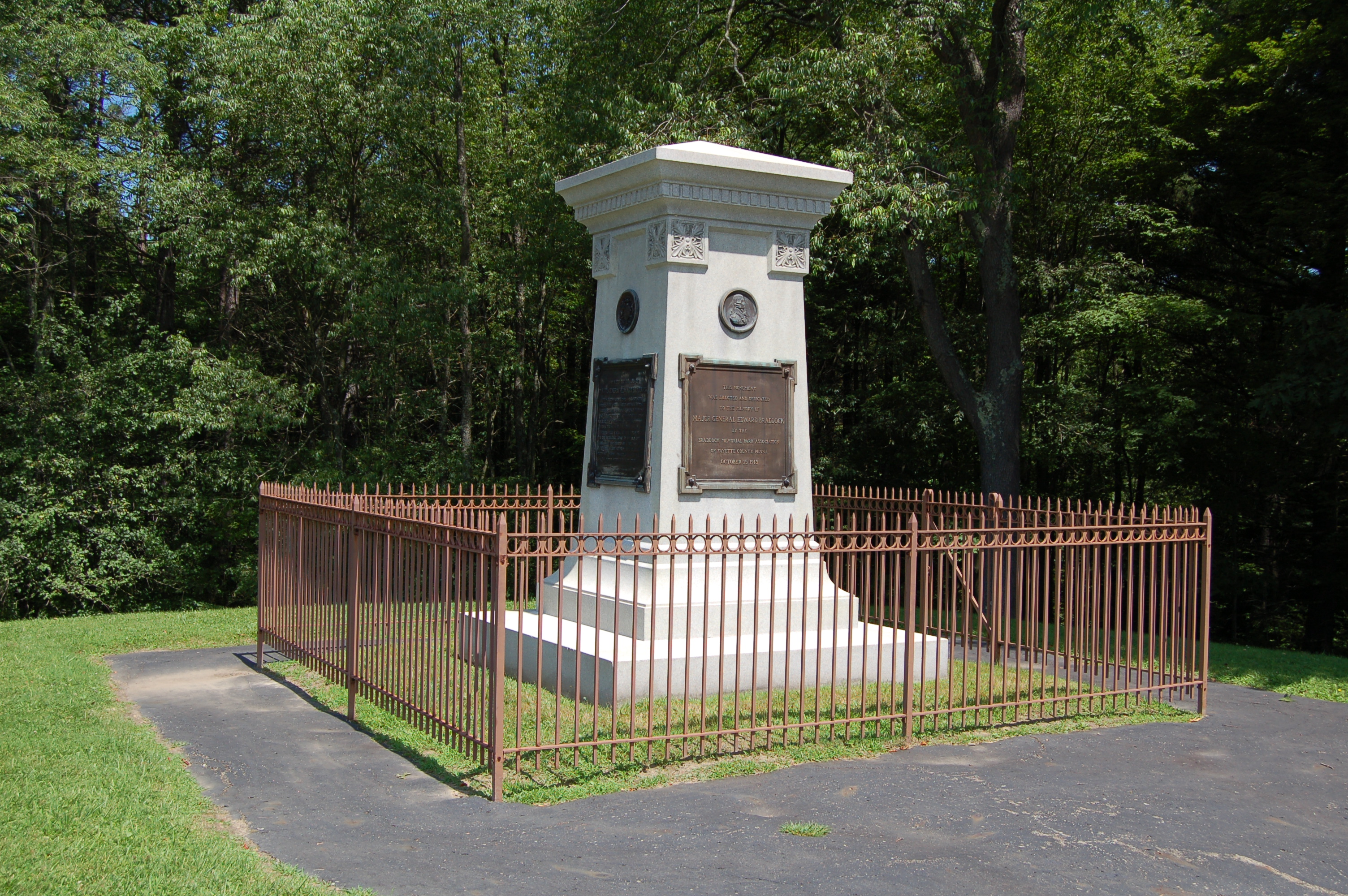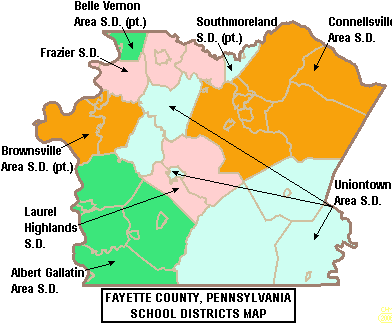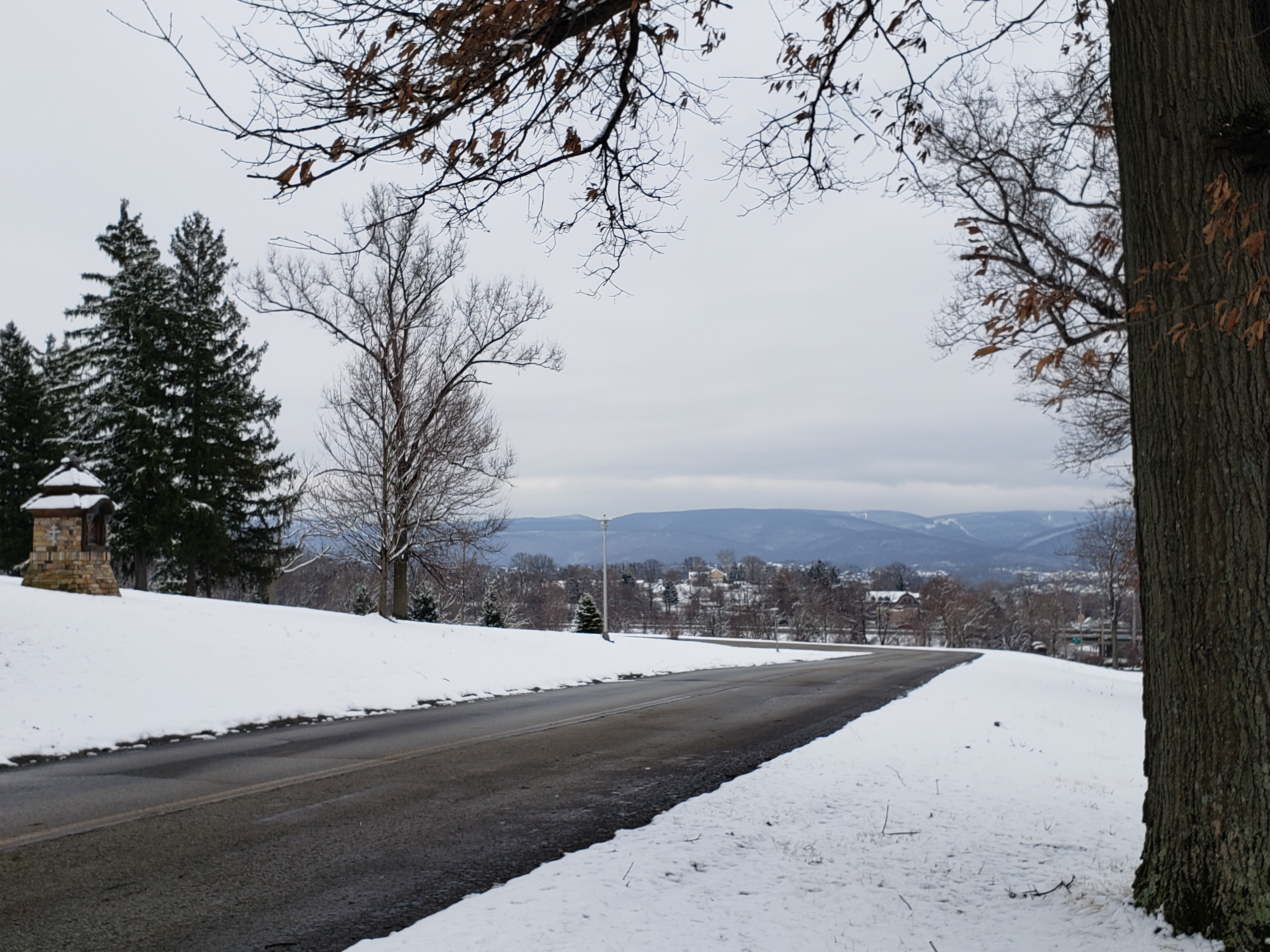|
Jumonville
Jumonville is a United Methodist camp and retreat center located in Fayette County, Pennsylvania, USA near the city of Uniontown, PA. Jumonville is famous for its 60-foot-tall cross that stands on top of Dunbar's Knob on Chestnut Ridge. Jumonville is named after Joseph Coulon de Villiers de Jumonville, who was killed during a skirmish with George Washington at the Battle of Jumonville Glen that set off the French and Indian War. Cross Jumonville is famous for its 60-foot-tall cross that stands on top of Dunbar's Knob (elevation 2480 ft). It is visible from seven counties, three states, and fifty miles on a clear day. Thousands of Sunday School children contributed dimes to help build the cross, and their names are sealed in the 183-ton concrete foundation. It was fabricated by Moore Metal Works of Greensburg, and erected on August 26, 1950. Dedication services were held on September 9. The cross arms project 12 feet on each side of the main shaft. The cross weighs 55 tons ... [...More Info...] [...Related Items...] OR: [Wikipedia] [Google] [Baidu] |
Joseph Coulon De Villiers De Jumonville
Joseph Coulon de Villiers, Sieur de Jumonville (September 8, 1718 – May 28, 1754) was a French Canadian military officer. His defeat and killing at the Battle of Jumonville Glen by forces led by George Washington was one of the sparks that ignited the Seven Years' War, also known as the French and Indian War in the United States. Early life Jumonville was born in the seigneury of Verchères, New France (now part of Quebec), the son of Nicolas-Antoine Coulon de Villiers, a French military officer. He began service with the French military at age 15, in his father's unit. He served in the army during several conflicts with native groups in the western Great Lakes region where he was stationed with his father and several of his brothers. His father and one of his brothers were killed at Baie-des-Puants (present Green Bay, Wisconsin) in 1733 during a battle with the Fox tribe. In 1739, he served in Governor Bienville's abortive expedition against the Chickasaw nation. He was late ... [...More Info...] [...Related Items...] OR: [Wikipedia] [Google] [Baidu] |
Joseph Coulon De Jumonville
Joseph Coulon de Villiers, Sieur de Jumonville (September 8, 1718 – May 28, 1754) was a French Canadian military officer. His defeat and killing at the Battle of Jumonville Glen by forces led by George Washington was one of the sparks that ignited the Seven Years' War, also known as the French and Indian War in the United States. Early life Jumonville was born in the seigneury of Verchères, New France (now part of Quebec), the son of Nicolas-Antoine Coulon de Villiers, a French military officer. He began service with the French military at age 15, in his father's unit. He served in the army during several conflicts with native groups in the western Great Lakes region where he was stationed with his father and several of his brothers. His father and one of his brothers were killed at Baie-des-Puants (present Green Bay, Wisconsin) in 1733 during a battle with the Fox tribe. In 1739, he served in Governor Bienville's abortive expedition against the Chickasaw nation. He was la ... [...More Info...] [...Related Items...] OR: [Wikipedia] [Google] [Baidu] |
Battle Of Jumonville Glen
The Battle of Jumonville Glen, also known as the Jumonville affair, was the opening battle of the French and Indian War, fought on May 28, 1754, near present-day Hopwood and Uniontown in Fayette County, Pennsylvania. A company of provincial troops from Virginia under the command of Lieutenant Colonel George Washington, and a small number of Mingo warriors led by the chieftain Tanacharison (also known as the "Half King"), ambushed a force of 35 Canadiens under the command of Joseph Coulon de Jumonville. A larger French Canadien force had driven off a small crew attempting to construct a British fort under the auspices of the Ohio Company at present-day Pittsburgh, Pennsylvania, land claimed by the French. A British colonial force led by George Washington was sent to protect the fort under construction. The French Canadiens sent Jumonville to warn Washington about encroaching on French-claimed territory. Washington was alerted to Jumonville's presence by Tanacharison, and th ... [...More Info...] [...Related Items...] OR: [Wikipedia] [Google] [Baidu] |
Battle Of The Great Meadows
The Battle of Fort Necessity, also known as the Battle of the Great Meadows, took place on July 3, 1754, in what is now Farmington in Fayette County, Pennsylvania. The engagement, along with the May 28 skirmish known as the Battle of Jumonville Glen, was George Washington's first military experience. The Battle of Fort Necessity began the French and Indian War, which later spiraled into the global conflict known as the Seven Years' War. Washington built Fort Necessity on an alpine meadow west of the summit of a pass through the Laurel Highlands of the Allegheny Mountains. Another pass nearby leads to Confluence, Pennsylvania; to the west, Nemacolin's Trail begins its descent to Uniontown, Pennsylvania, and other parts of Fayette County along the relatively low altitudes of the Allegheny Plateau. Background The French Empire, despite the fact that they began colonizing North America in the 16th century, had between only 75,000 and 90,000 colonists living in New France in the mi ... [...More Info...] [...Related Items...] OR: [Wikipedia] [Google] [Baidu] |
French And Indian War
The French and Indian War (1754–1763) was a theater of the Seven Years' War, which pitted the North American colonies of the British Empire against those of the French, each side being supported by various Native American tribes. At the start of the war, the French colonies had a population of roughly 60,000 settlers, compared with 2 million in the British colonies. The outnumbered French particularly depended on their native allies. Two years into the French and Indian War, in 1756, Great Britain declared war on France, beginning the worldwide Seven Years' War. Many view the French and Indian War as being merely the American theater of this conflict; however, in the United States the French and Indian War is viewed as a singular conflict which was not associated with any European war. French Canadians call it the ('War of the Conquest').: 1756–1763 The British colonists were supported at various times by the Iroquois, Catawba, and Cherokee tribes, and the French ... [...More Info...] [...Related Items...] OR: [Wikipedia] [Google] [Baidu] |
Fort Necessity
Fort Necessity National Battlefield is a National Battlefield in Fayette County, Pennsylvania, United States, which preserves the site of the Battle of Fort Necessity. The battle, which took place on July 3, 1754, was an early battle of the French and Indian War, and resulted in the surrender of British colonial forces under Colonel George Washington, to the French and Indians, under Louis Coulon de Villiers. The site also includes the Mount Washington Tavern, once one of the inns along the National Road, and in two separate units the grave of British General Edward Braddock, killed in 1755, and the site of the Battle of Jumonville Glen. Battle of Fort Necessity (1754) After returning to the great meadows in northwestern Virginia, and what is now Fayette County, Pennsylvania, George Washington decided it prudent to reinforce his position. Supposedly named by Washington as Fort Necessity or Fort of Necessity, the structure protected a storehouse for supplies such as gunpow ... [...More Info...] [...Related Items...] OR: [Wikipedia] [Google] [Baidu] |
Fayette County, Pennsylvania
Fayette County is a county in the Commonwealth of Pennsylvania. It is located in southwestern Pennsylvania, adjacent to Maryland and West Virginia. As of the 2020 census, the population was 128,804. Its county seat is Uniontown. The county was created on September 26, 1783, from part of Westmoreland County and named after the Marquis de Lafayette. Fayette County is part of the Pittsburgh, PA Metropolitan Statistical Area. The southern border of Fayette County is the southern border of Pennsylvania at both the Pennsylvania–Maryland state line (the Mason–Dixon line) and the Pennsylvania–West Virginia state line. History The first Europeans in Fayette County were explorers, who had used an ancient American Indian trail that bisected the county on their journey across the Appalachian Mountains. In 1754, when control of the area was still in dispute between France and Great Britain, 22-year-old George Washington fought against the French at the Battle of Jumonville Glen ... [...More Info...] [...Related Items...] OR: [Wikipedia] [Google] [Baidu] |
Uniontown, PA
Uniontown is a city in Fayette County, Pennsylvania, United States, southeast of Pittsburgh and part of the Greater Pittsburgh Region. The population was 10,372 at the 2010 census, down from 12,422 at the 2000 census. It is the county seat and largest city of Fayette County. History Uniontown was founded by Henry Beeson on July 4, 1776. This was, coincidentally, the same date the United States Declaration of Independence was adopted. The National Road, also known as the Cumberland Road, was routed through Uniontown in the early 19th century, and the town grew along with the road (now US 40). southeast of Uniontown is Fort Necessity, built by George Washington during the French and Indian War (part of the international Seven Years' War) as well as the site of the Battle of Jumonville Glen, where the North American branch of the war began. Uniontown's role in the Underground Railroad in the antebellum years is commemorated by a marker on the corner of East Main Street and Baker ... [...More Info...] [...Related Items...] OR: [Wikipedia] [Google] [Baidu] |
United Methodist Church
The United Methodist Church (UMC) is a worldwide mainline Protestant denomination based in the United States, and a major part of Methodism. In the 19th century, its main predecessor, the Methodist Episcopal Church, was a leader in evangelicalism. The present denomination was founded in 1968 in Dallas, Texas, by union of the Methodist Church and the Evangelical United Brethren Church. The UMC traces its roots back to the revival movement of John and Charles Wesley in England, as well as the Great Awakening in the United States. As such, the church's theological orientation is decidedly Wesleyan. It embraces liturgical worship, holiness, and evangelical elements. The United Methodist Church has a connectional polity, a typical feature of a number of Methodist denominations. It is organized into conferences. The highest level is called the General Conference and is the only organization which may speak officially for the UMC. The church is a member of the World Council of C ... [...More Info...] [...Related Items...] OR: [Wikipedia] [Google] [Baidu] |
United States
The United States of America (U.S.A. or USA), commonly known as the United States (U.S. or US) or America, is a country primarily located in North America. It consists of 50 states, a federal district, five major unincorporated territories, nine Minor Outlying Islands, and 326 Indian reservations. The United States is also in free association with three Pacific Island sovereign states: the Federated States of Micronesia, the Marshall Islands, and the Republic of Palau. It is the world's third-largest country by both land and total area. It shares land borders with Canada to its north and with Mexico to its south and has maritime borders with the Bahamas, Cuba, Russia, and other nations. With a population of over 333 million, it is the most populous country in the Americas and the third most populous in the world. The national capital of the United States is Washington, D.C. and its most populous city and principal financial center is New York City. Paleo-Americ ... [...More Info...] [...Related Items...] OR: [Wikipedia] [Google] [Baidu] |
The Cross, Jumonville Methodist Training Center, Uniontown, PA (87767)
''The'' () is a grammatical article in English, denoting persons or things already mentioned, under discussion, implied or otherwise presumed familiar to listeners, readers, or speakers. It is the definite article in English. ''The'' is the most frequently used word in the English language; studies and analyses of texts have found it to account for seven percent of all printed English-language words. It is derived from gendered articles in Old English which combined in Middle English and now has a single form used with pronouns of any gender. The word can be used with both singular and plural nouns, and with a noun that starts with any letter. This is different from many other languages, which have different forms of the definite article for different genders or numbers. Pronunciation In most dialects, "the" is pronounced as (with the voiced dental fricative followed by a schwa) when followed by a consonant sound, and as (homophone of pronoun ''thee'') when followed by a v ... [...More Info...] [...Related Items...] OR: [Wikipedia] [Google] [Baidu] |
Greensburg, Pennsylvania
Greensburg is a city in and the county seat of Westmoreland County, Pennsylvania, United States, and a part of the Pittsburgh Metro Area. The city lies within the Laurel Highlands and the ecoregion of the Western Allegheny Plateau (ecoregion), Western Allegheny Plateau. The city is named after Nathanael Greene, a major general of the Continental Army in the American Revolutionary War. The population was 14,976 at the 2020 United States census, 2020 census. Located southeast of Pittsburgh, Greensburg is a major business, academic, tourism, and cultural center in Western Pennsylvania. It is evident as the city's population doubles during work hours. In 2007, Greensburg was ranked as one of the "Best Places to Retire" in Pennsylvania by ''U.S. News & World Report''. History After the end of the American Revolutionary War, Revolutionary War, an inn was built along a wagon trail that stretched from Philadelphia west over the Appalachian Mountains to Fort Pitt (Pennsylvania), Fort P ... [...More Info...] [...Related Items...] OR: [Wikipedia] [Google] [Baidu] |






.png)
